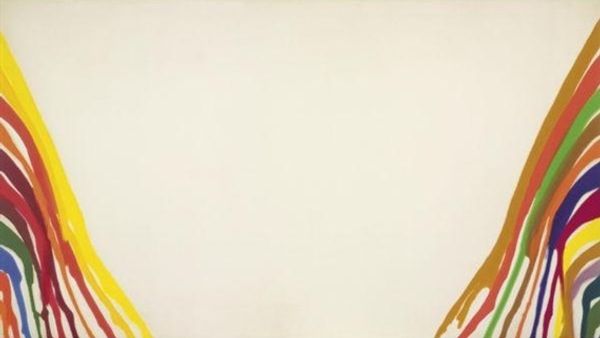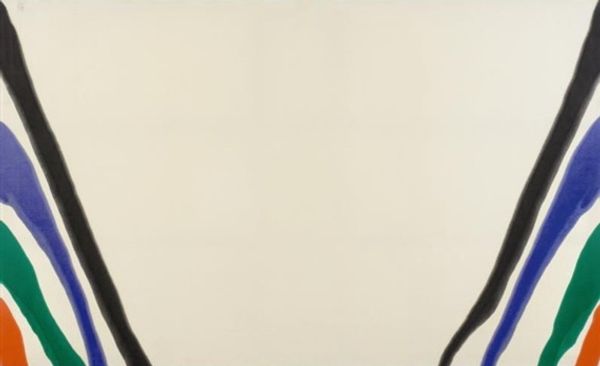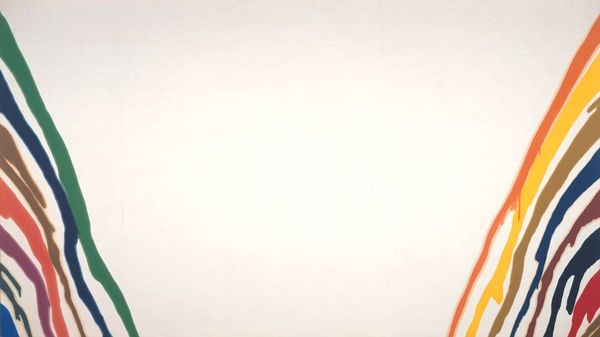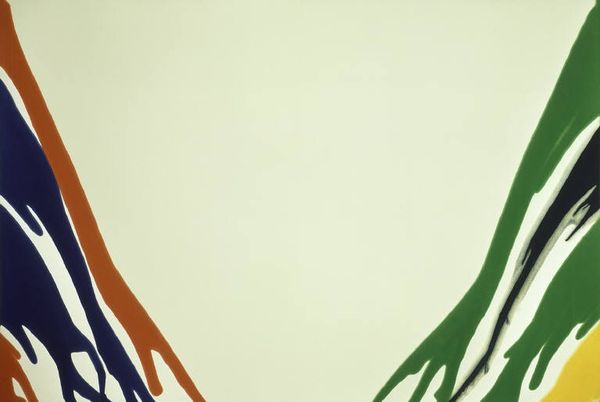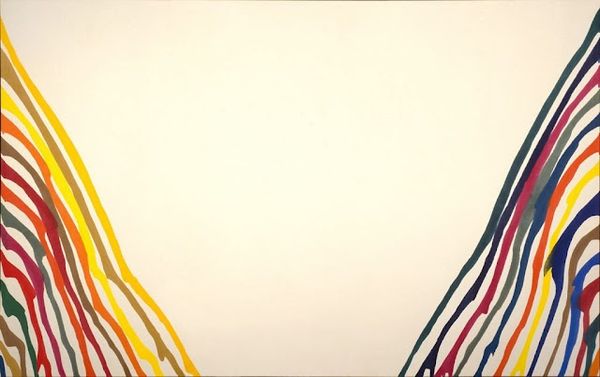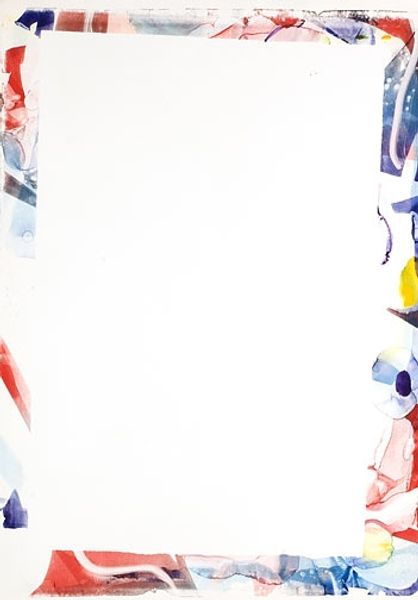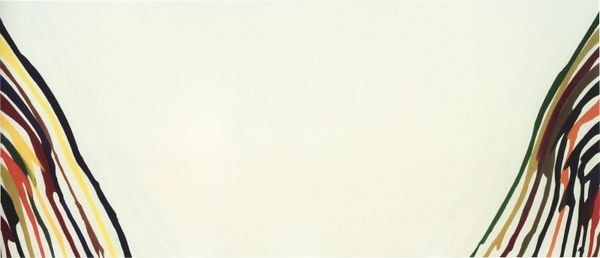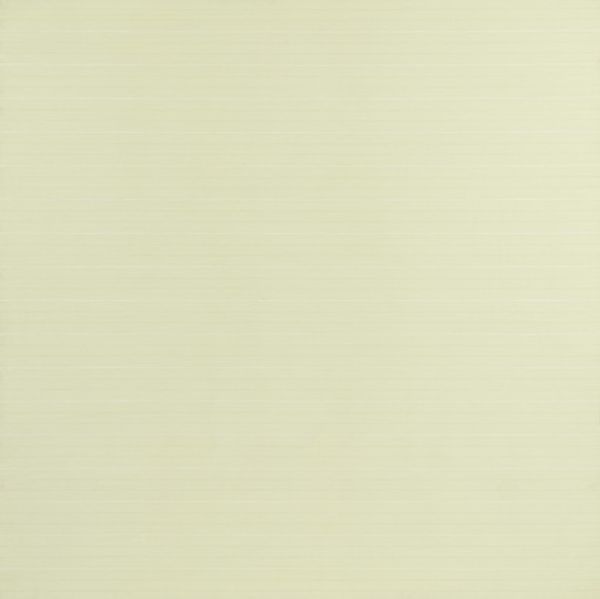
painting, acrylic-paint
#
abstract-expressionism
#
washington-colour-school
#
abstract expressionism
#
abstract painting
#
painting
#
colour-field-painting
#
acrylic-paint
#
abstraction
#
line
Dimensions: 261 x 422.9 cm
Copyright: Morris Louis,Fair Use
Editor: Here we have Morris Louis’ “Gamma Tau,” painted in 1960 with acrylic on canvas. It strikes me how much raw canvas he leaves untouched – like the colorful rivulets are emerging from this void. What do you make of that approach? Curator: From a materialist perspective, the unprimed canvas isn't just negative space; it’s an active participant. Louis stained the canvas, right? By doing this he’s pushing against traditional painting techniques where the paint sits on the surface. How do you think the absorption changes our perception of the paint? Editor: I guess it makes it feel less like an object, more integrated with the support itself? Almost like the color is inherent to the canvas rather than applied. Curator: Exactly! It breaks down the separation between ground and figure. Think about the labor involved. This wasn’t about delicate brushstrokes; it was about pouring, staining, and controlling the flow of paint. He’s using gravity and the absorbency of the material as key elements in the making process, and by removing gestural marks, what message is he passing on? Editor: Hmm... perhaps focusing attention away from the artist's individual expression, and drawing attention to the materials themselves? Also to the manufacturing of these new acrylic paints? Curator: Precisely. Acrylic paints became commercially available only a few years prior. So, considering the work's title—"Gamma Tau"—perhaps Louis is playfully engaging in this manufacturing development in relation to the physics in which the pigments are being laid down? Editor: That's a really insightful way of looking at it. It makes me think differently about abstract expressionism; not just as pure emotion, but tied to industry. Curator: That's the crucial point. By understanding the materials and process, we unlock a whole new dimension of meaning in Louis' work, don’t we?
Comments
No comments
Be the first to comment and join the conversation on the ultimate creative platform.

